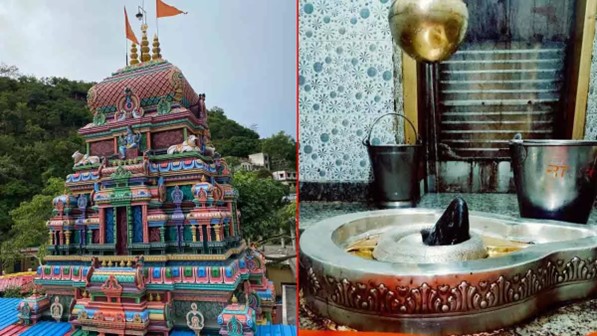
Neelkanth
The Neelkanth Mahadev Temple, nestled amidst the serene hills of Pauri Garhwal district in Uttarakhand, India, is a revered shrine dedicated to Lord Shiva. Here’s a detailed story of this significant temple:
Mythology and Legend:
- Samudra Manthan: The most prominent legend associated with Neelkanth Mahadev Temple is the tale of Samudra Manthan, the churning of the ocean by gods (Devas) and demons (Asuras) to obtain Amrita, the elixir of immortality. During this churning, a deadly poison called Halahala emerged, threatening to destroy the entire universe.
- Lord Shiva’s Sacrifice: To save the world, Lord Shiva selflessly consumed the poison. The potent poison turned his throat blue, earning him the name Neelkanth, meaning “the blue-throated one.”
- Penance and Installation: It is believed that Lord Shiva came to this spot after consuming the poison and meditated for a long time to alleviate its effects. Before returning to Kailash, his abode, he installed a symbolic Shivalinga at the site where he meditated. This sacred spot became the Neelkanth Mahadev Temple.
Significance and Beliefs:
- Divine Grace: Devotees believe that visiting the Neelkanth Mahadev Temple and offering prayers with sincerity can wash away their sins and bring them closer to spiritual liberation (moksha).
- Fulfillment of Wishes: It is said that Lord Shiva fulfills the wishes of those who visit his shrine with devotion and faith.
- Guardian Deity: Neelkanth Mahadev is considered the guardian deity of the region, protecting it from harm and ensuring the well-being of its inhabitants.
Temple Architecture:
- Traditional Style: The Neelkanth Mahadev Temple showcases a blend of traditional North Indian and Garhwali architectural styles.
- Intricate Carvings: The temple walls are adorned with intricate carvings depicting scenes from Hindu mythology, including the Samudra Manthan and various forms of Lord Shiva.
- Majestic Shivalinga: The main deity is a naturally formed Shivalinga, representing Lord Shiva’s divine energy.
- Natural Spring: The temple complex also houses a natural spring where devotees take a holy dip before entering the shrine.
Visiting the Temple:
- Location: The Neelkanth Mahadev Temple is located about 32 km from Rishikesh, a popular pilgrimage town in Uttarakhand.
- Accessibility: The temple is well-connected by road. Taxis and buses are readily available from Rishikesh to reach the temple.
- Best Time to Visit: The ideal time to visit the Neelkanth Mahadev Temple is during the summer months (May to October), excluding the monsoon season (July and August).
- Festivals: The temple comes alive during Maha Shivaratri, a grand festival dedicated to Lord Shiva, with special prayers and celebrations.
The Neelkanth Mahadev Temple is not just a place of worship; it is a symbol of devotion, sacrifice, and the divine power of Lord Shiva. It attracts devotees from all over the world who seek his blessings and are captivated by the legends and mysteries surrounding this sacred shrine.
